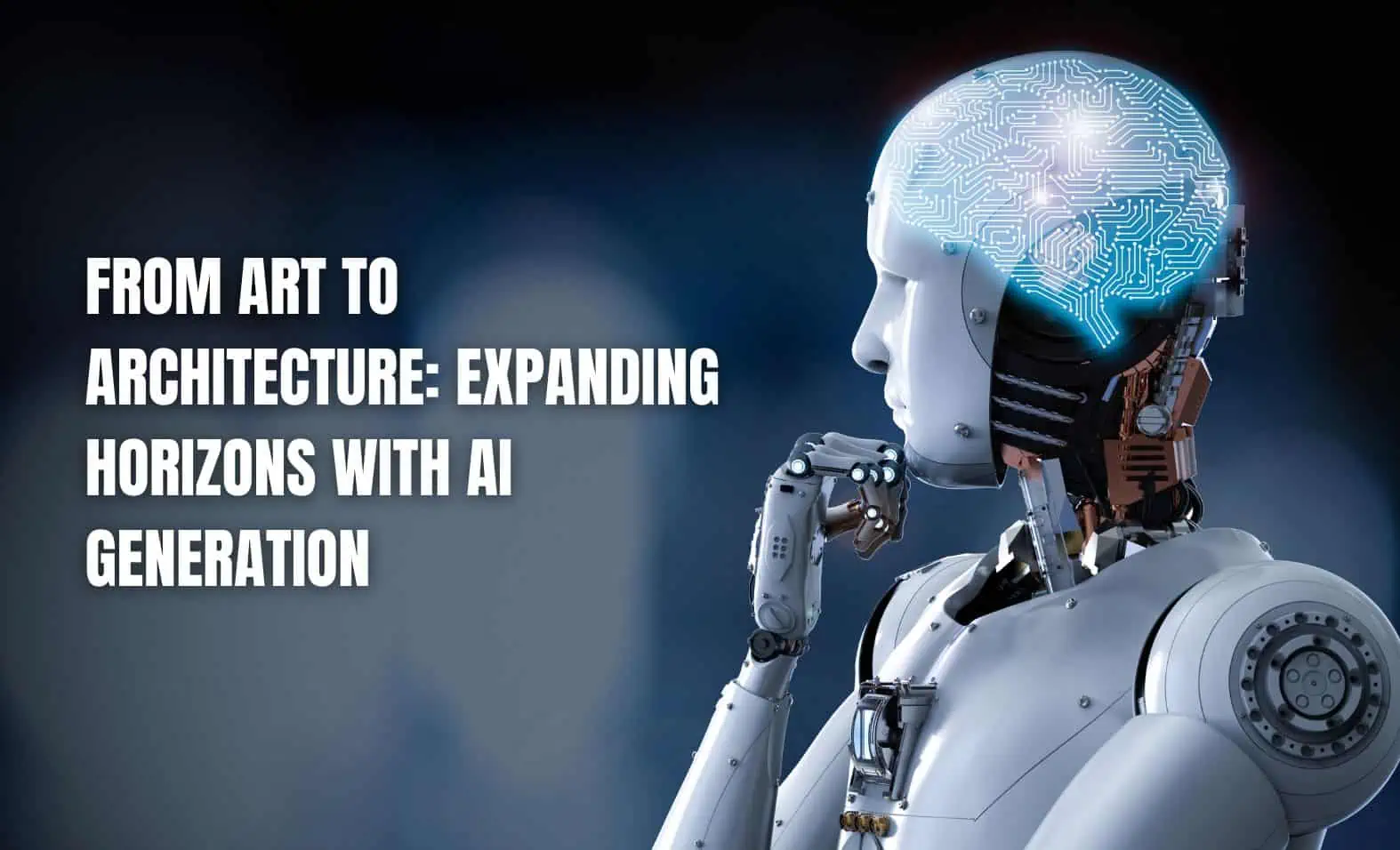From Art to Architecture: Expanding Horizons with AI Generation
In recent years, there’s been a buzz around a specific technology reshaping how we think about creativity and design. This technology, known as generative AI, is taking fields like art and architecture by storm, breaking barriers and offering new avenues to explore. Let’s delve deep into this transformative world and see how it revolutionizes art...
Felicity Chance
October 23, 2023
CONTENTS
In recent years, there’s been a buzz around a specific technology reshaping how we think about creativity and design. This technology, known as generative AI, is taking fields like art and architecture by storm, breaking barriers and offering new avenues to explore. Let’s delve deep into this transformative world and see how it revolutionizes art and architecture.
1. Understanding the Basics: What is AI Generation?
At its core, AI generation is a type of artificial intelligence that can produce new, unique content. Instead of just responding to commands or analyzing data, it can create. Whether it’s crafting an artwork, composing music, or designing buildings, it
uses patterns it learns from existing data to come up with something entirely new. Picture it as a highly advanced and imaginative artist with a brain made of codes and algorithms, pushing the boundaries of creativity in the digital age.
2. Artistic Endeavors: AI as the New Age Artist
Art has always been a deeply human expression, but the AI generation is shaking things up. Artists and designers now use AI tools to assist in their creative processes. For instance, an artist might feed an AI generation thousands of images of a particular art style. After analyzing and learning from those images, the AI can generate artworks that fit that style. The result? Beautiful, AI-assisted artworks that blend the creativity of both humans and machines. It’s like having a digital muse that offers endless inspiration to artists and designers alike.
3. Building the Future: AI Generation in Architecture
Architecture is not just about constructing buildings but about designing functional, aesthetic, and sustainable spaces. AI Generation can assist architects by offering design options based on set parameters. Let’s say an architect is working on a sustainable home design. They can input specific requirements into the AI, like natural light optimization and energy efficiency. The AI then proposes various designs that fulfill these criteria, giving architects a creative boost and potentially saving valuable time in the architectural design process.
4. Collaborative Efforts: Humans and AI Working Hand-in-Hand
The real magic happens when human creativity collaborates with AI generation. Artists and architects retain control over the design process, using AI to expand their creative horizons. It’s not about replacing the human touch but enhancing it. The creative process becomes a two-way dialogue between the human and the AI, each pushing the boundaries of what’s possible and discovering new frontiers in art and architecture.
5. The Bigger Picture: Beyond Art and Architecture
While art and architecture are two prominent fields where AI generation is making a mark, its potential goes way beyond. The applications are endless, from fashion design to music composition and even in scientific research. It’s a testament to how technology, when used right, can be a catalyst for innovation in almost any domain. AI generation is not just another tech trend; it’s a transformative tool that has the potential to redefine the boundaries of creativity and design, shaping a future where AI and human creativity coexist in harmony.
According to Adobe, “As a family of generative AI models, Firefly is unique because Adobe intends it to be more than an AI text-to-image generator. We plan for Adobe Firefly to supplement the creative tools Adobe creators know and love with text-based editing and generation of various media, from still images to video to 3D.”
AI generation is not just another tech trend; it’s a transformative tool that has the potential to redefine the boundaries of creativity and design, shaping a future where AI and human creativity coexist in harmony.
More posts
5 Secrets to Succeeding in a Competitive Financial Environment
Among the most demanding and fast-paced industries of the modern economy is the financial one. From stock markets to fintech…

The New Innovative Metrics to Measure Social Media Success Beyond Likes and Shares
In the dynamic world of social media, where likes and shares no longer paint the full picture, we’ve gathered insights…

Advanced Targeting Strategies for Instagram Ads: Reaching Your Niche Audience
Instagram has evolved into a powerhouse for advertisers looking to connect with a diverse and engaged audience. However, as the…


